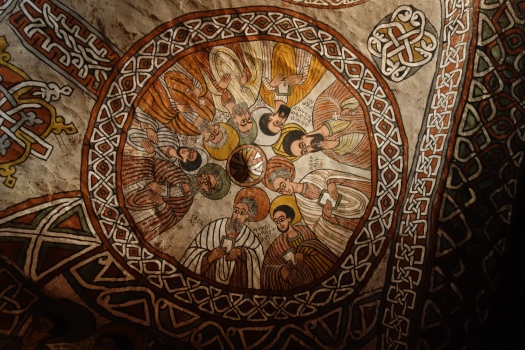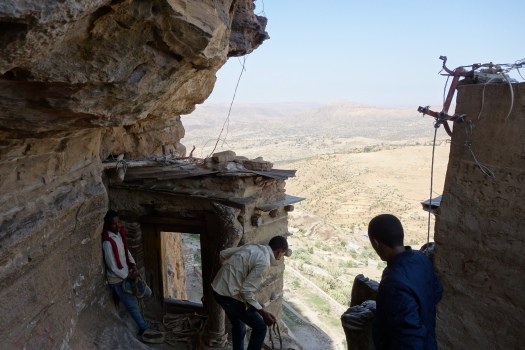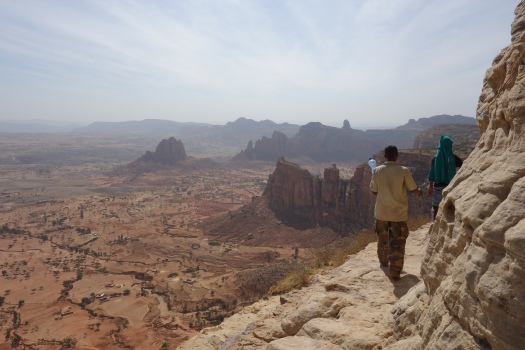Getting to church might involve a long walk or a car-ride for some, maybe a set of stairs. But in the Tigray region of Ethiopia, there are dozens of “churches” — not the kind you would attend mass in as a large group, but small, holy places carved into the stone — that require a lot more than that. Several of them, including one of the most famous known as Abuna Yemata Guh, are tucked inside cliffs that require “parishioners” to climb ropes, walk along steep ledges and across wooden planks thousands of feet above the ground. Some of these cave churches date back to the year 500 A.D.

Despite (or possibly because of) the effort it takes to get to them, the visit is worth it, as Zac from Australia points out in an excellent blog post about his trip to the region, where he visited several of these mountain cave churches and monasteries. In many places, self-appointed “deacons” will help guide you to the next foot-hold (climbing barefoot is recommended) or show you which tree branches to grab on to. At the top, the deacon will ring a bell of some kind to summon the priest, who will show you around the cave, with all of its incredible colored murals, and may even show you a 1,400-year-old hand-inked “bible.”
Calling the Tigray churches Ethiopia’s best kept secret would not only be a cliche, but an enormous understatement. The Tigray churches are an exceptional combination of culture, history and nature, yet they’re unheard of by most visitors to Ethiopia. This isn’t a new phenomenon–the churches, many of which are over 1,000 years old, were only known to their immediate communities until the 1960s. Since then, new churches have been ‘found’ every few years, which is hardly surprising given that they’re often hidden on remote mountaintops and cliffs.
Zac has a lot of information in his blog post, not just about his visits to the churches themselves, but about the region of Ethiopia they are in — which is poor, and also close to the border with Eritrea, where there are occasionally violent skirmishes. He also created an interactive map of the different churches and monasteries and their locations. What’s interesting to me is that he celebrates the interactions with the priests and monks and just regular townspeople almost as much as he praises the murals or the churches themselves. That’s my kind of traveler.
“What makes these churches even more unforgettable are the people–the priests, the monks and the lay churchgoers. Weather its being given a passionate demonstration of a centuries-old door lock by a priest, sharing a plate of injera with a group of old ladies, or drinking a cup or three of homebrew with a Kalashnikov-wielding monk, the hospitality of the Tigrayan clergy and churchgoers is nothing short of humbling. This is the hospitality of an ancient Christianity, one which was practiced in these pockets of the Tigray Region unspoiled by outsiders, be they monarchy or missionary.”


